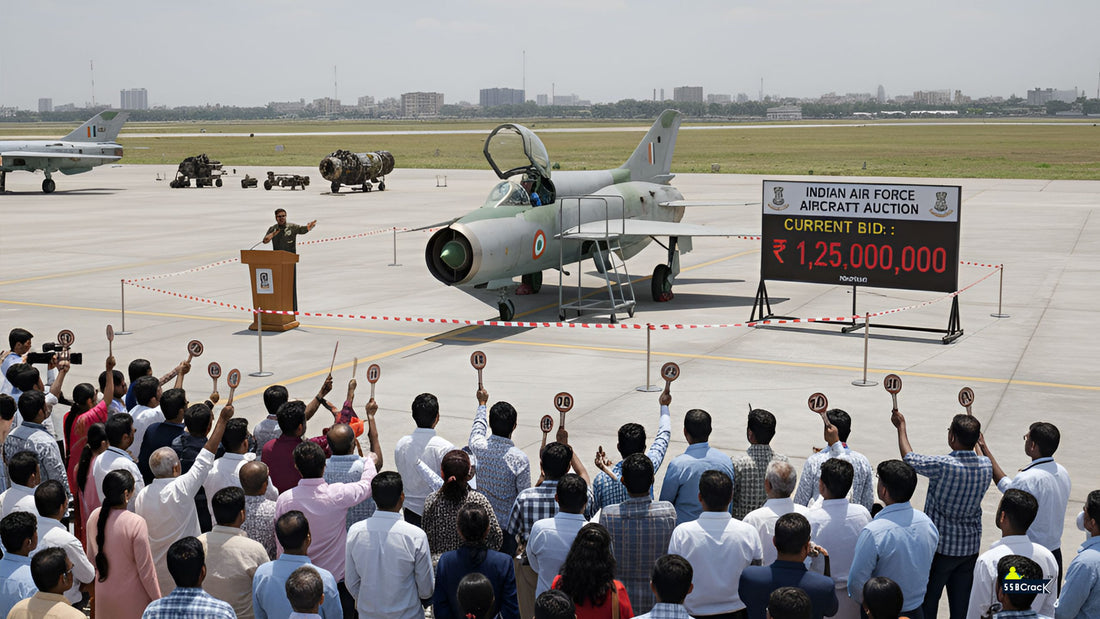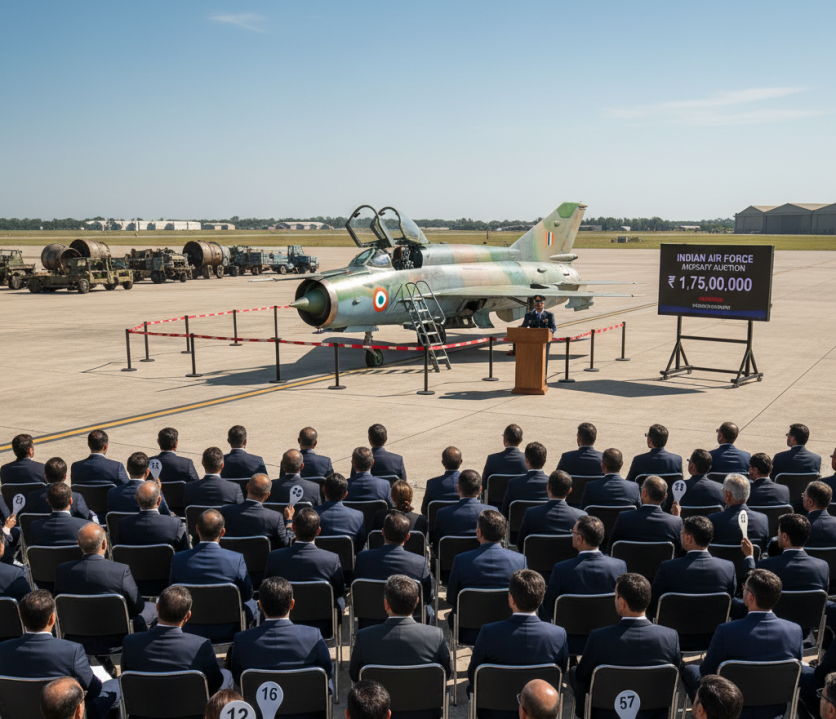Exploring the Retirement and Future of India's MiG-21 Fighter Jets

The Indian Air Force bid farewell to the MiG-21 on September 26, 2025, concluding a significant chapter in the nation's military aviation history. The MiG-21, introduced in 1963 as India's first supersonic fighter jet, was a product of the Soviet Mikoyan-Gurevich bureau. Over the years, it evolved from a cutting-edge interceptor to a mainstay in the IAF, adapting through various iterations from the initial FL models to the advanced Bison variant, and participated in every major conflict involving India during its service.
With the MiG-21s now retired, questions have emerged regarding their future: Is it possible for civilians or collectors to acquire these aircraft? This investigation explores the MiG-21's legacy, the complexities of military asset disposal within India, comparisons with global practices, and the feasibility of post-retirement use, drawing insights from history, policy analyses, and recent developments.
The MiG-21's integration into India began against the backdrop of geopolitical changes in the early 1960s. After the 1962 Sino-Indian War, India sought advanced aircraft to strengthen its defenses. The Soviet Union's offer of the MiG-21, inclusive of a technology transfer for local assembly, surpassed Western bids from the British Lightning and the American F-104 Starfighter. The initial consignment of six disassembled aircraft arrived in 1963, assembled under the supervision of Russian pilots before Indian pilots, including future IAF Chief Dilbag Singh, took command.
By the 1970s, Hindustan Aeronautics Limited (HAL) had produced hundreds of MiG-21s under license, amounting to 874 across various versions like the Type 77, Bis, and Bison. These jets were known for being lightweight and agile, reaching speeds of Mach 2, powered by the Tumansky R-25 engine, which featured an emergency thrust booster for enhanced maneuvers.
In combat scenarios, the MiG-21 consistently demonstrated its capabilities. During the 1965 Indo-Pakistan War, despite being few in number and facing armament limitations (many lacked guns and depended on missiles), the MiG-21s held their ground against Pakistan's F-86 Sabres. The 1971 Bangladesh Liberation War featured notable moments, such as MiG-21s overcoming Pakistani F-104s and bombing the Governor's House in Dhaka, accelerating the surrender process. In the 1999 Kargil conflict, they provided air cover, and in 2019, Wing Commander Abhinandan Varthaman famously piloted a Bison to down a Pakistani F-16 following the Balakot airstrikes. Veterans, including Air Marshal (Retd.) Vinod K Bhatia, recall the spartan cockpit with minimal air-conditioning, often leading to significant pilot dehydration during missions. Squadron Leader SS Tyagi, who logged the highest flight hours on the jet, attributes 80% of India’s 1971 success to its versatility in rocketry, gunnery, and bombing.
Also Read: What Will Happen to MiG-21 Fighter Jets After Retirement?
However, the final years of the MiG-21's service were overshadowed by safety issues. Official statistics show over 482 crashes occurred between 1971 and 2012, resulting in the loss of 171 pilots and others, mainly due to engine failures, high landing speeds, and outdated systems. Although upgrades such as the Bison variant in the 1990s introduced modern avionics, delays in procuring replacements due to bureaucratic hindrances extended its operational life beyond optimal limits. At the time of its retirement, the IAF's squadron strength had fallen to 29, against an authorized 42, prompting the purchase of 97 Tejas Mk-1A jets at a cost of Rs 62,000 crore.

The decommissioning of these jets adheres to strict Indian government protocols governed by the Ministry of Defence, prioritizing national security over commercial interests. Unlike other countries that allow retired military aircraft to enter private ownership, India restricts civilian sales to prevent the dissemination of sensitive technology. The procedure starts with demilitarization, where radars, sensors, engines, and electronics are removed for reuse in active fleets or secure storage. The remaining airframes have various destinies. Many are offered as static displays to museums, like the IAF Museum in Delhi, or to educational institutions to encourage future generations. For example, a TU-142M was transformed into a museum in Visakhapatnam in 2017. Others serve as "gate guardians" at airbases or as training tools.
In instances where preservation isn't feasible, airframes are auctioned as scrap for metal recycling, similar to the INS Vikrant warship, which was sold for Rs 60 crore in 2014. Some may become expendable targets in live-fire exercises. Official auctions for operational jets are non-existent, and fraudulent listings, like a MiG-23 display piece on OLX in 2020, highlight the rarity and illegality of private sales. Diplomatic gifts, such as Russia's request for three MiG-21s in 2018 for museum displays, are rare exceptions.
Also Read: What’s Next for MiG-21 Fighter Pilots? These Are the Jets They’ll Fly Now
Internationally, the disposal of MiG-21s varies. With over 11,500 units produced for more than 60 air forces worldwide, practices differ. In the United States, retired jets like KC-10 tankers are auctioned to private refueling companies. Eastern European MiG-21s have been listed on platforms such as eBay or Controller.com, after demilitarization for collectors, often priced affordably compared to a Cessna 172. Legalities require adherence to export controls and FAA certifications for flight, with a prohibition on armaments. In contrast, India's approach is cautious, emphasizing the recycling of parts rather than their introduction to the market.
| MiG-21 Variants in IAF Service | Induction Year | Key Features | Retirement Timeline |
|---|---|---|---|
| MiG-21FL (Type 77) | 1963 | Basic interceptor; cannon/missile armament | Phased out by 2013 |
| MiG-21M/MF (Type 96) | 1970s | Improved radar; better avionics | Retired in phases through 2020s |
| MiG-21Bis (Type 75) | 1980s | Upgraded engine; enhanced weaponry | Last retired 2025 |
| MiG-21 Bison | 1990s (upgrade) | Modernized with multi-mode radar, beyond-visual-range missiles | Final squadrons decommissioned Sept 26, 2025 |
With the shift towards indigenous aircraft like the Tejas, the MiG-21's legacy continues to be honored not in private collections but through national remembrance and public displays. This careful approach to disposal reflects ongoing discussions about balancing heritage preservation with security considerations, ensuring these "sentinels of the skies" continue to inspire without compromising defense integrity.



















